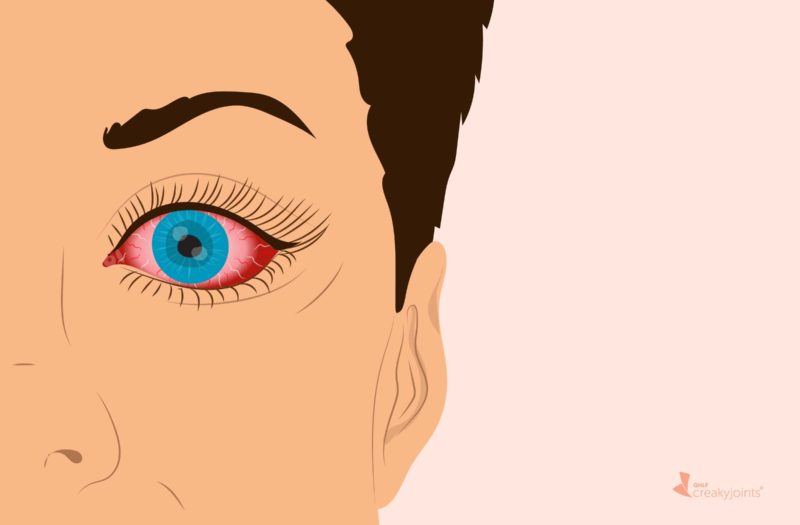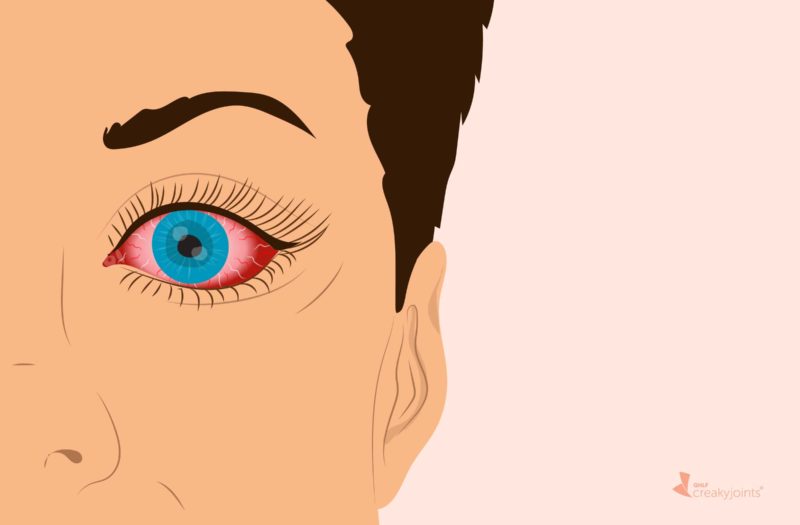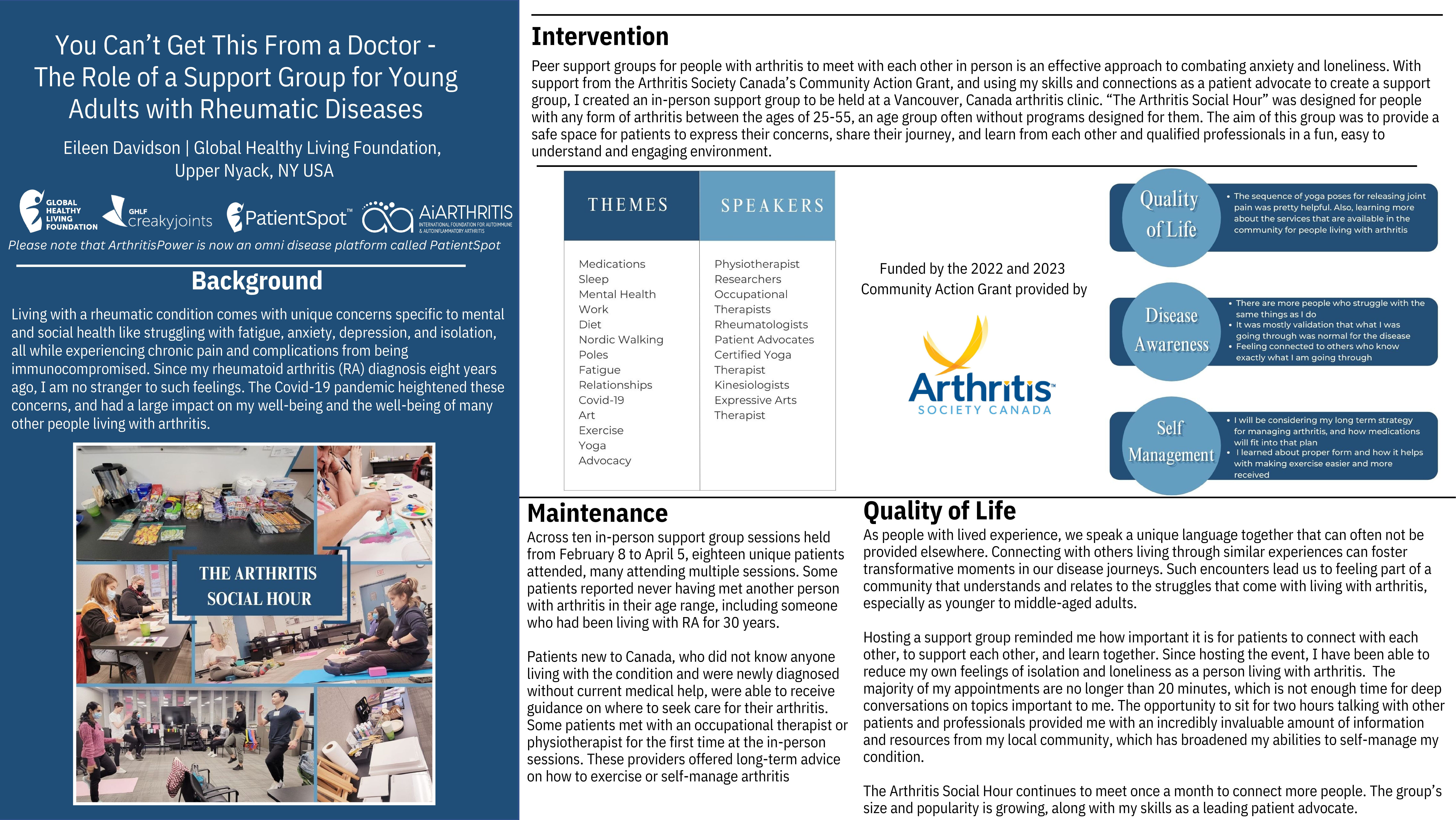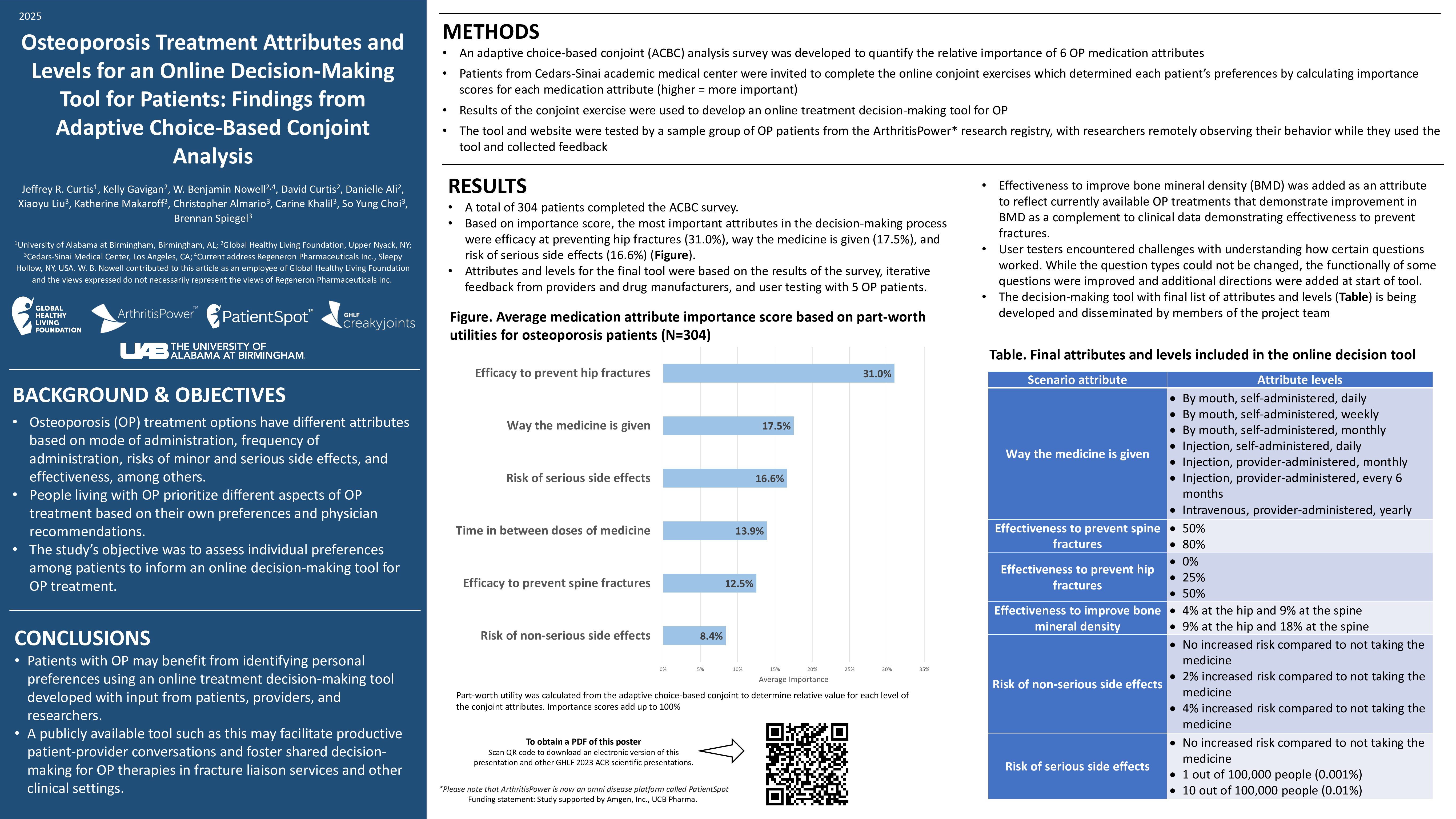Learn more about our FREE COVID-19 Patient Support Program for chronic illness patients and their loved ones.
When it comes to COVID-19, all eyes are on the respiratory tract, which is considered the primary means of transmission — respiratory droplets are spread mainly from person to person, when an infected person coughs, sneezes, talks, or sings. The droplets can land in the mouths or noses of people nearby and cause them to become infected.
Much less attention has been focused on the eyes as a portal of entry for the coronavirus. However, because the surface of the eye and the inner eyelids are lined by the same mucous membrane (called the conjunctiva) as the respiratory tract, if infected coronavirus droplets land in your eye, it’s possible that you could become infected.
This possibility isn’t surprising, considering that our eyes, nose, and throat are all connected. “In the eyelid, there’s a tear drain that connects right to the back of the throat,” explains Matthew Gorski, MD, an ophthalmology specialist at Northwell Health’s Center for Adult Ophthalmology in Great Neck, New York. “If there is coronavirus in your tears, without a doubt, there’s the potential of it entering your mouth and your respiratory tract through this drainage system.”
Still, Dr. Gorski stresses that any discussion of the transmissibility of COVID via the eyes is preliminary. “We don’t know for sure how easily it can be transmitted to the eyes.”
Eye Symptoms of COVID-19
One possible sign of the presence of COVID-19 is conjunctivitis (also known as pink eye). This inflammation of the clear mucous membrane that overlies the eye is most commonly caused by a viral infection. The hallmark symptom of conjunctivitis is the pink or reddish color that occurs when the blood vessels in the conjunctiva become inflamed, making them more visible.
Other common symptoms of conjunctivitis include:
- Burning
- Mild discharge
- Eye crusting upon waking
- Scratchy foreign body sensation
“Those are the common symptoms of run-of-the-mill pink eye,” says Dr. Gorski. “With COVID-19 being a virus, it would have a similar presentation.”
That said, it’s unlikely that having pink eye alone means you have COVID-19.
“Patients have asked if their pink eye could be the first symptom of COVID-19,” Moran Eye Center ophthalmologist Jeff Pettey, MD, said in an article for The University of Utah. “The answer is, without the common symptoms of fever, cough, or shortness of breath, it is highly, highly unlikely.”
COVID-19 Transmission Through the Eyes Is Rare
There have been studies suggesting that COVID can be transmitted through the conjunctiva. But, according to Dr. Gorski, “we’ve seen an extremely low percentage of COVID-19 patients presenting with conjunctivitis.” It should be noted that Dr. Gorski works at Northwell Health, which is located outside of New York City and was part of the epicenter of the first wave of COVID-19 in the U.S.
In a small study on the clinical manifestation of COVID-19 in China, researchers reported that 12 of 38 patients with COVID-19 had ocular symptoms — such as watery and sore eyes — consistent with conjunctivitis. They also noted that these symptoms commonly occurred in patients with more severe cases of coronavirus. While the study helps raise awareness about ocular involvement with COVID-19, because the sample size of the study is so small, the findings are limited.
Another study published in the New England Journal of Medicine found that just 0.8 percent of nearly 1,100 patients with confirmed COVID-19 infections experienced the typical red, infected eyes of conjunctivitis.
When conjunctivitis is associated with COVID-19, it tends to run its course as the disease improves, says Dr. Gorski.
Regardless of the route of transmission, COVID-19 is often more severe in people who have underlying health conditions like lung or heart disease, diabetes, or conditions that affect their immune system. If you’re experiencing any symptoms of COVID-19, including cough, shortness of breath, and fever, be sure to inform your health care provider.
Eyes Have a Natural Protective Mechanism
One possible explanation for the low percentage of ocular-related complications is that the surface of the eye has its own very robust immune system. “In addition to tears that help protect the ocular surface, there’s mucous — if the eye senses a pathogen it often produces a lot of mucous as a way of protecting the lining of the eye,” says Dr. Gorski.
It’s important not to disrupt the eyes’ natural protective mechanism, so avoid flushing the eyes with water, as stripping away lubrication can increase the risk of infection. If your eyes become red or irritated, moisturizing drops may help alleviate symptoms.
If your eyes are chronically dry, which is a side effect of many medications, talk to your eye care provider. “Managing a chronic eye problem is important to decrease the amount of eye rubbing and face touching in the setting of the COVID-19 pandemic,” says Dr. Gorski.
Likewise, if you develop red eye, discharge, or other eye symptoms or visual changes, discuss them with your eye care provider. While it’s natural to worry that these symptoms might be due to COVID-19, there are other causes of conjunctivitis, including bacterial infection, allergens (pollen), and irritants (smoke or dust). Your doctor will be able to diagnose the cause of pink eye based on your symptoms and medical history.
Rheumatic Conditions and Eye Symptoms
It’s also important to keep in mind that inflammatory arthritis and other rheumatic conditions are often linked with eye problems. Different types of rheumatic disease can cause different kinds of eye problems, but common ones include:
- Dry eye
- Uveitis
- Scleritis
- Cataracts
- Glaucoma
- Peripheral ulcerative keratitis
- Retinal vascular occlusion
If your eyes are bothering you during the pandemic, it’s important not to let symptoms go unchecked. You may be trying to avoid extra health care provider visits, but you should let your eye care provider, rheumatologist, or primary care provider know so they can advise on what to do next, based on your medical history.
How to Protect Your Eye Health and Avoid COVID-19
The best way to protect against COVID-19 is to avoid coming into contact with the virus. Wearing a face mask is highly effective, but it doesn’t shield your eyes, which is why infectious disease expert Anthony Fauci, MD, who is a leading authority in the U.S. coronavirus response, recently suggested wearing goggles or eye shields for “perfect protection of the mucosal surfaces.”
Though goggles and eye or face shields aren’t universally recommended at this time, “if you really want to be complete, you should probably use it if you can,” he told ABC News.
Other important steps include following social distancing guidance (the U.S. Centers for Disease Control and Prevention (CDC) recommends maintaining six feet between yourself and people who don’t live in your household) and hand washing/sanitizing.
COVID-19 can also be contracted by touching surfaces where it lands and then touching your own mouth, nose, or eyes, so it’s important to avoid touching your face. Depending on the surface material, the virus can live for several hours or seven days, according to the Cleveland Clinic.
Since keeping your hands off your face is easier said than done (one study found that we touch our eyes, nose, and mouth more than 20 times an hour), be sure to wash your hands often with soap and water for at least 20 seconds (or hand sanitizer with at least 60 percent alcohol until hands feel dry), especially after being in a public place or after blowing your nose, coughing, or sneezing. Daily cleaning and disinfecting of frequently touched objects and surfaces can also help protect you.
Concern About Contact Lens Wearers
Refraining from touching your eyes, mouth, and nose can prevent the spread of COVID-19, but if you wear contact lenses, touching your eyes can’t be avoided. To that end, the American Academy of Ophthalmology has suggested that people who wear contacts consider opting to wear their glasses instead. Besides providing a barrier against eye-touching, eyeglasses can help shield your eyes from respiratory droplets that transmit the coronavirus.
That said, according to Dr. Gorski, “there’s been no evidence that just wearing contact lenses increases the transmission of COVID.”
If you choose to continue wearing your contacts, now’s the time to do so safely, he says. “It’s a reminder of the need to have excellent contact lens hygiene, to avoid rubbing your eyes, and to wash your hands for at least 20 seconds.”
Get Free Coronavirus Support for Chronic Illness Patients
Join the Global Healthy Living Foundation’s free COVID-19 Support Program for chronic illness patients and their families. We will be providing updated information, community support, and other resources tailored specifically to your health and safety. Join now.
Andreano C. Dr. Fauci: Wear goggles or eye shields to prevent spread of COVID-19; flu vaccine a must. ABC News. July 29, 2020. https://abcnews.go.com/US/dr-fauci-wear-goggles-eye-shields-prevent-spread/story?id=72059055.
Guan W, et al. Clinical Characteristics of Coronavirus Disease 2019 in China. The New England Journal of Medicine. March 6, 2020. doi: https://doi.org/10.1056/NEJMoa2002032.
How Long Will Coronavirus Survive on Surfaces? Cleveland Clinic. https://health.clevelandclinic.org/how-long-will-coronavirus-survive-on-surfaces.
Interview with Matthew Gorski, MD, an ophthalmology specialist at Northwell Health’s Center for Adult Ophthalmology in Great Neck, New York
Is Pink Eye a Symptom of COVID-19? University of Utah Health. April 16, 2020. https://healthcare.utah.edu/healthfeed/postings/2020/04/pink-eye.php.
Mukamal R. Eye Care During the Coronavirus Pandemic (COVID-19). American Academy of Ophthalmology. May 22, 2020. https://www.aao.org/eye-health/tips-prevention/coronavirus-covid19-eye-infection-pinkeye.
Wu P, et al. Characteristics of Ocular Findings of Patients With Coronavirus Disease 2019 (COVID-19) in Hubei Province, China. JAMA Ophthalmology. March 31, 2020. doi: https://doi.org/10.1001/jamaophthalmol.2020.1291.
Zhou L, et al. ACE2 and TMPRSS2 Are Expressed on the Human Ocular Surface, Suggesting Susceptibility to SARS-CoV-2 Infection. bioRxiv. doi: https://doi.org/10.1101/2020.05.09.086165.












